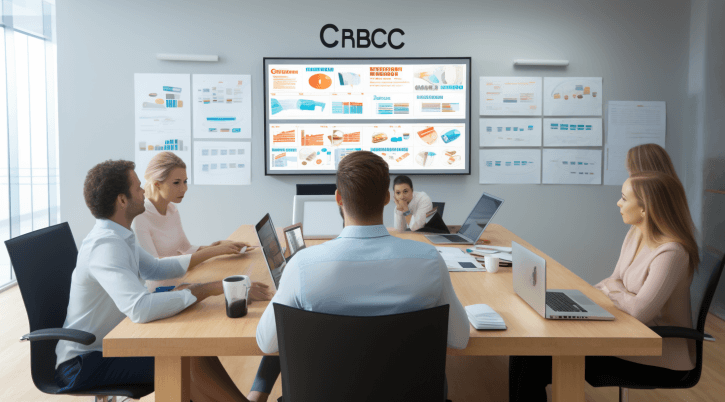Understanding B2C Lead Generation
In the world of business-to-consumer (B2C) marketing, lead generation plays a crucial role in identifying and attracting potential customers. By understanding the fundamentals of B2C lead generation, businesses can effectively target and engage their desired audience. This section explores what B2C lead generation entails and highlights its importance in driving business growth.
What is B2C Lead Generation?
B2C lead generation refers to the process of identifying and capturing potential customers for products or services offered by a business directly to consumers. It involves strategies and tactics aimed at generating interest and encouraging individuals to provide their contact information, such as email addresses or phone numbers. These leads can then be nurtured and converted into customers through targeted marketing efforts.
Lead generation in the B2C context often relies on various channels, including but not limited to email marketing, social media advertising, content marketing, and search engine optimization (SEO). These channels allow businesses to reach and engage with their target audience, creating opportunities to build relationships and drive conversions.
Importance of B2C Lead Generation
B2C lead generation is of paramount importance for businesses looking to expand their customer base and increase sales. Here are a few key reasons why it is crucial:
1. Targeted Audience: B2C lead generation enables businesses to focus their marketing efforts on specific segments of the consumer market. By identifying their ideal customer profile, businesses can tailor their messaging and offerings to resonate with the needs and preferences of their target audience.
2. Increased Conversions: By capturing leads, businesses have the opportunity to nurture and guide potential customers through the sales funnel. Through strategic and personalized communication, businesses can build trust, address customer pain points, and ultimately increase the likelihood of conversions.
3. Business Growth: Generating a steady stream of qualified leads is essential for sustained business growth. By consistently attracting new prospects and converting them into customers, businesses can expand their customer base, increase revenue, and establish themselves as industry leaders.
4. Customer Insights: B2C lead generation provides valuable insights into consumer behavior, preferences, and trends. By analyzing data collected during the lead generation process, businesses can gain a deeper understanding of their target market and make informed decisions about their marketing strategies.
5. Competitive Advantage: Effective lead generation strategies give businesses a competitive edge. By staying ahead of the curve and employing innovative tactics to attract and engage customers, businesses can differentiate themselves from competitors and position themselves as industry leaders.
Understanding the basics of B2C lead generation is a crucial step for businesses aiming to optimize their marketing efforts and drive growth. By implementing effective lead generation strategies, businesses can attract and convert their target audience, ultimately leading to increased sales and long-term success.
Strategies for B2C Lead Generation
To effectively generate leads in a business-to-consumer (B2C) context, it’s crucial to employ strategies that resonate with your target audience. Here are three key strategies that can help drive B2C lead generation:
Building an Ideal Customer Profile
One of the first steps in B2C lead generation is building an ideal customer profile. By understanding the characteristics, preferences, and behaviors of your target audience, you can tailor your marketing efforts to attract the right leads.
Start by conducting market research to gather demographic and psychographic information about your potential customers. This includes factors such as age, gender, location, interests, and purchasing habits. Analyze this data to create a detailed profile of your ideal customer, which will serve as a guide for your lead generation efforts.
By aligning your messaging, content, and offers with the needs and desires of your target audience, you can attract more qualified leads and increase conversion rates. For more insights on creating effective cold email outreach, check out our article on cold email templates.
Creating High-Quality Content
In the digital age, creating high-quality content is paramount for successful B2C lead generation. Content that educates, entertains, or solves a problem for your target audience can position your brand as an authority and attract potential customers.
Develop a content marketing strategy that includes a mix of blog posts, videos, infographics, and social media content. Optimize your content for search engines by incorporating relevant keywords and providing valuable information that addresses the pain points of your target audience.
Consider creating lead magnets, such as e-books, checklists, or webinars, that provide additional value to your audience in exchange for their contact information. These lead magnets can help you capture leads and nurture them through the sales funnel. To enhance your email marketing efforts, explore our article on cold email subject lines for effective ways to increase open rates.
Leveraging Social Media Platforms
Social media platforms offer immense opportunities for leveraging B2C lead generation. Identify the platforms where your target audience is most active and establish a strong presence there.
Create engaging and shareable content specifically designed for each social media platform. Utilize a mix of images, videos, and interactive content to capture the attention of your audience. Incorporate calls-to-action (CTAs) that encourage users to visit your website, sign up for newsletters, or participate in contests.
Engage with your audience by responding to comments, messages, and reviews promptly. Building a strong social media community can foster trust and loyalty, leading to increased lead generation. To effectively manage your leads and customer interactions, consider implementing a customer relationship management (CRM) system. Learn more about CRM systems in our article on lead generation tools.
By employing these B2C lead generation strategies, you can attract and capture the attention of your target audience, effectively nurturing them into valuable leads. Remember to continuously analyze and optimize your lead generation campaigns to maximize your results.
Tips for Effective B2C Lead Generation
To maximize the success of your B2C lead generation efforts, there are several key tips to keep in mind. By personalizing cold email outreach, implementing marketing automation, and analyzing and optimizing lead generation campaigns, you can enhance your chances of connecting with potential customers and driving conversions.
Personalizing Cold Email Outreach
When reaching out to potential leads through cold email, personalization is key. Generic and impersonal emails are likely to be ignored or deleted. Instead, take the time to research your target audience and tailor your emails to their specific needs and pain points.
Start by addressing recipients by their name and reference any relevant information you have about them or their business. Demonstrate that you understand their challenges and provide a clear value proposition. Personalized cold email templates can serve as a helpful starting point for crafting impactful messages. For a collection of ready-to-use templates, check out our article on cold email templates.
Remember to keep your emails concise, compelling, and focused on the recipient’s benefit. Use attention-grabbing subject lines to increase open rates and include a clear call-to-action that prompts the recipient to take the desired next step.
Implementing Marketing Automation
Marketing automation can greatly streamline the lead generation process and improve efficiency. By leveraging tools and platforms that automate repetitive tasks, you can save time and resources while maintaining a consistent and personalized approach.
Implementing marketing automation allows you to segment your audience based on various criteria, such as demographics, behavior, or engagement level. This enables you to deliver targeted and relevant content to specific groups, increasing the likelihood of conversions.
Automation also enables you to nurture leads through automated email sequences, delivering timely and valuable content to guide them through the buyer’s journey. By automating lead scoring and tracking, you can identify the most promising prospects and prioritize your efforts accordingly. For more information on lead generation automation, check out our article on lead generation automation.
Analyzing and Optimizing Lead Generation Campaigns
To continuously improve your B2C lead generation efforts, it is essential to regularly analyze and optimize your campaigns. Tracking key metrics allows you to measure the success of your strategies and identify areas for improvement.
Some key metrics to track include conversion rates, click-through rates, open rates, and cost per lead. By analyzing these metrics, you can gain insights into the effectiveness of your campaigns and make data-driven decisions to optimize your lead generation efforts.
Experiment with different approaches, such as testing different email subject lines, call-to-action buttons, or landing page designs. A/B testing can provide valuable insights into what resonates best with your target audience. Iterate and refine your strategies based on the results to continuously improve your lead generation campaigns.
Remember, successful B2C lead generation is an ongoing process that requires constant evaluation and adaptation. By personalizing cold email outreach, implementing marketing automation, and analyzing and optimizing your lead generation campaigns, you can enhance your chances of attracting and converting high-quality leads.
Tools and Technologies for B2C Lead Generation
When it comes to B2C lead generation, utilizing the right tools and technologies can significantly enhance your efforts. These tools help streamline your processes, improve efficiency, and maximize the potential of your lead generation campaigns. In this section, we will explore three essential tools for B2C lead generation: Customer Relationship Management (CRM) Systems, Email Marketing Software, and Lead Capture and Tracking Tools.
Customer Relationship Management (CRM) Systems
A Customer Relationship Management (CRM) system is a powerful tool that allows businesses to manage and organize their customer data effectively. CRM systems enable you to store and track customer interactions, analyze customer behavior, and gain insights that can inform your lead generation strategies.
With a CRM system, you can create and maintain a centralized database of your leads and customers, including their contact information, purchase history, and preferences. This information helps you better understand your target audience and tailor your marketing efforts accordingly. Additionally, CRM systems often provide features like lead scoring and segmentation, enabling you to prioritize and categorize leads for more personalized outreach.
When selecting a CRM system for B2C lead generation, consider factors such as ease of use, integration capabilities with other tools, and scalability. By effectively leveraging a CRM system, you can streamline your lead management process and nurture your leads more efficiently.
Email Marketing Software
Email marketing remains one of the most effective strategies for B2C lead generation. Email marketing software allows you to create, automate, and track email campaigns, helping you engage with your leads and guide them through the sales funnel.
With email marketing software, you can design visually appealing emails using customizable templates. These tools often provide features such as personalization, segmentation, and A/B testing, allowing you to tailor your emails to specific target groups and optimize your campaigns for better results. Additionally, email marketing software enables you to automate your email sequences, ensuring timely and consistent communication with your leads.
To make the most of your email marketing efforts, it’s essential to craft compelling email content, including attention-grabbing subject lines and relevant calls-to-action. Experimenting with different email templates and analyzing the performance metrics provided by your email marketing software can help you refine your campaigns over time.
Lead Capture and Tracking Tools
Lead capture and tracking tools play a crucial role in B2C lead generation by helping you capture contact information and monitor the behavior of your website visitors. These tools allow you to create lead capture forms, pop-ups, and landing pages that entice visitors to provide their contact details in exchange for valuable content or offers.
Lead capture and tracking tools often integrate with CRM systems, enabling seamless transfer of lead data for efficient follow-up. By monitoring the actions and engagement of your leads on your website, you can gain insights into their interests and preferences, allowing for more targeted and personalized communication.
When selecting lead capture and tracking tools, consider features such as form customization options, integration capabilities, and analytics reporting. These tools can significantly enhance your B2C lead generation efforts by capturing valuable leads and providing insights to optimize your strategies.
By utilizing the right tools and technologies, businesses can effectively streamline their B2C lead generation processes, nurture leads, and drive conversions. Customer Relationship Management (CRM) systems, email marketing software, and lead capture and tracking tools are essential components of a comprehensive lead generation strategy. With the right combination of these tools, you can enhance your B2C lead generation efforts and achieve your marketing goals.
Measuring Success in B2C Lead Generation
To effectively optimize your B2C lead generation efforts, it is crucial to track key metrics and evaluate the success of your strategies. This allows you to identify areas of improvement and make data-driven decisions. Here are some key metrics to track and tips for evaluating and adjusting your lead generation strategies.
Key Metrics to Track
- Conversion Rate: The conversion rate measures the percentage of leads that successfully convert into customers. By tracking this metric, you can assess the effectiveness of your lead generation campaigns and identify areas that need improvement.
- Cost per Lead (CPL): This metric calculates the average cost incurred to generate a single lead. Tracking the CPL helps you evaluate the efficiency and cost-effectiveness of your lead generation strategies.
- Lead Quality: It is essential to assess the quality of the leads generated. Analyze metrics such as lead source, lead demographics, and lead behavior to determine the quality and relevance of the leads. This information can guide your targeting and segmentation efforts.
- Return on Investment (ROI): ROI measures the profitability of your lead generation campaigns. It compares the revenue generated from converted leads against the costs incurred. Tracking ROI helps you assess the overall effectiveness of your strategies and make informed decisions about resource allocation.
- Lead Response Time: Timely follow-up is crucial for lead conversion. Measure the average response time to leads and identify any bottlenecks or delays in the lead management process. Prompt responses can significantly impact lead engagement and conversion rates.
Evaluating and Adjusting Strategies
- Analyze Data: Regularly review the collected data to identify patterns, trends, and areas of improvement. Look for patterns in lead sources, demographics, and behavior to refine your targeting and messaging strategies.
- A/B Testing: Experiment with different variations of your lead generation strategies, such as email subject lines, call-to-action buttons, or landing page layouts. A/B testing allows you to compare the performance of different elements and optimize your campaigns based on real-time data.
- Refine Targeting: Use the insights gained from data analysis to refine your ideal customer profile and target audience. This helps you focus your resources on the most promising leads and personalize your messaging to resonate with their needs and preferences.
- Continuous Optimization: Lead generation is an ongoing process that requires constant optimization. Regularly monitor and adjust your strategies based on the performance of key metrics. Keep a pulse on industry trends and evolving customer preferences to stay ahead of the competition.
By measuring key metrics and evaluating the success of your B2C lead generation strategies, you can refine your approach and increase the effectiveness of your campaigns. Remember to track and analyze data consistently, use A/B testing to optimize your tactics, and continuously refine your targeting and messaging strategies. With these practices in place, you can drive better results and maximize the ROI of your lead generation efforts.



